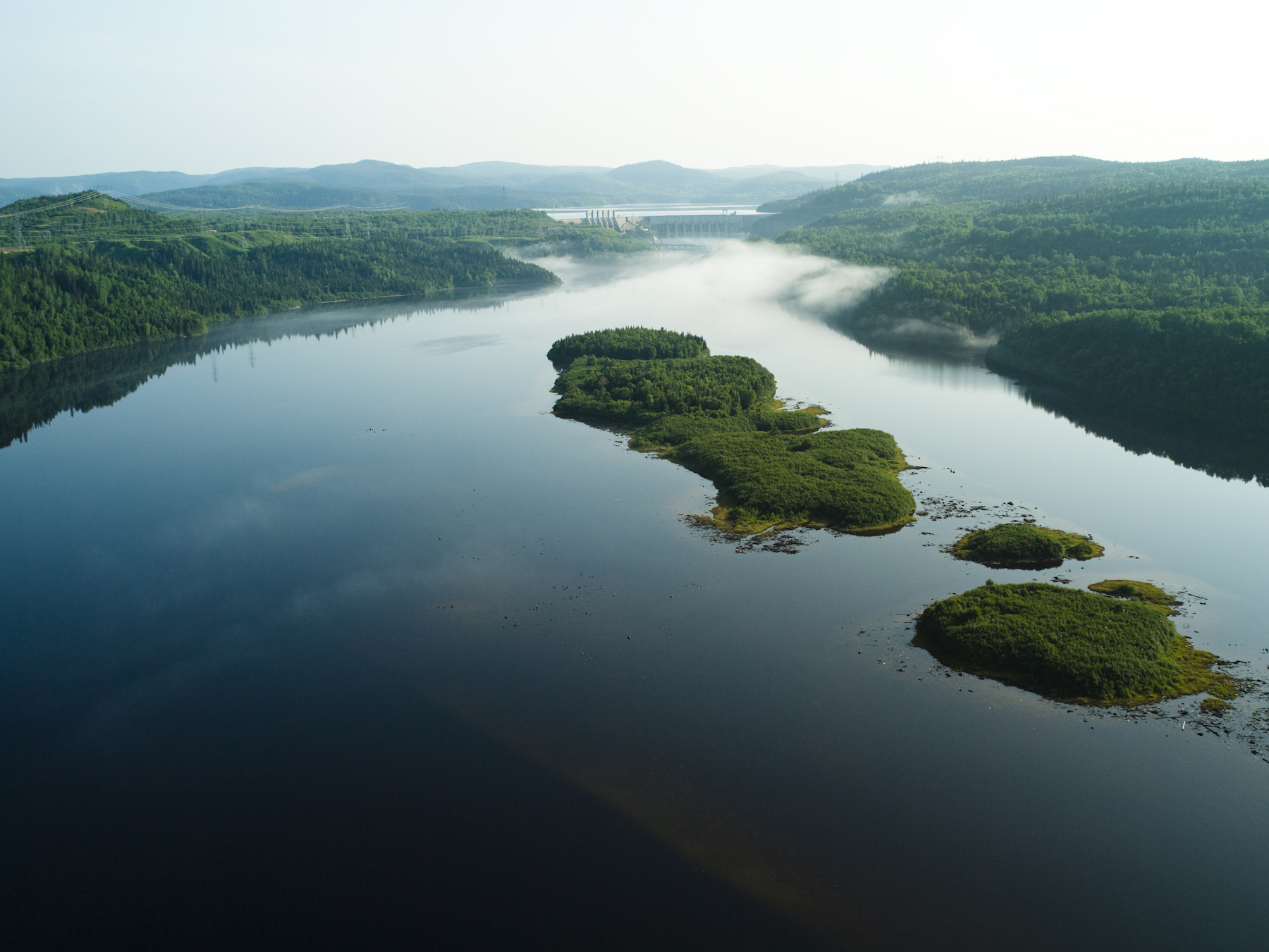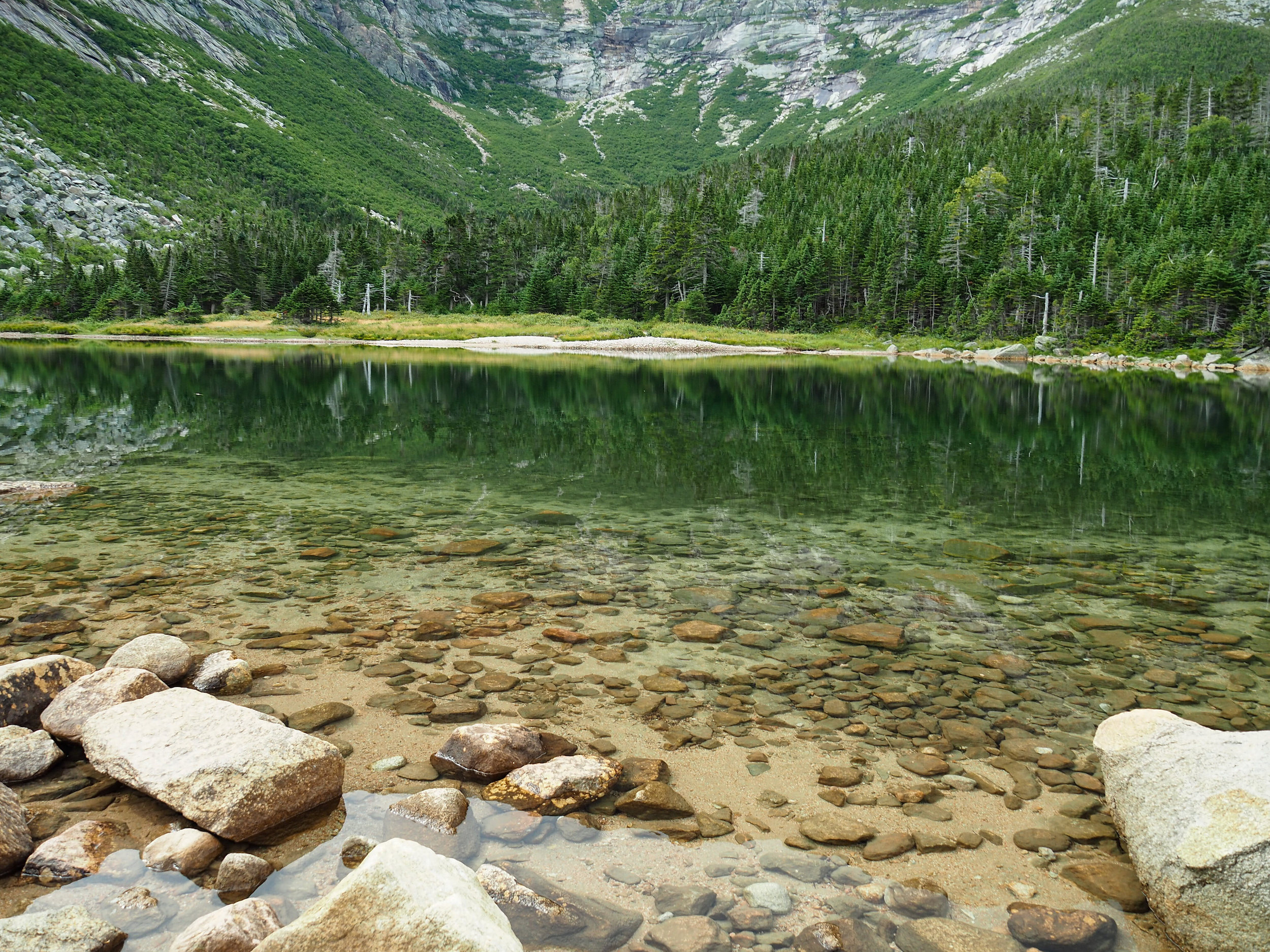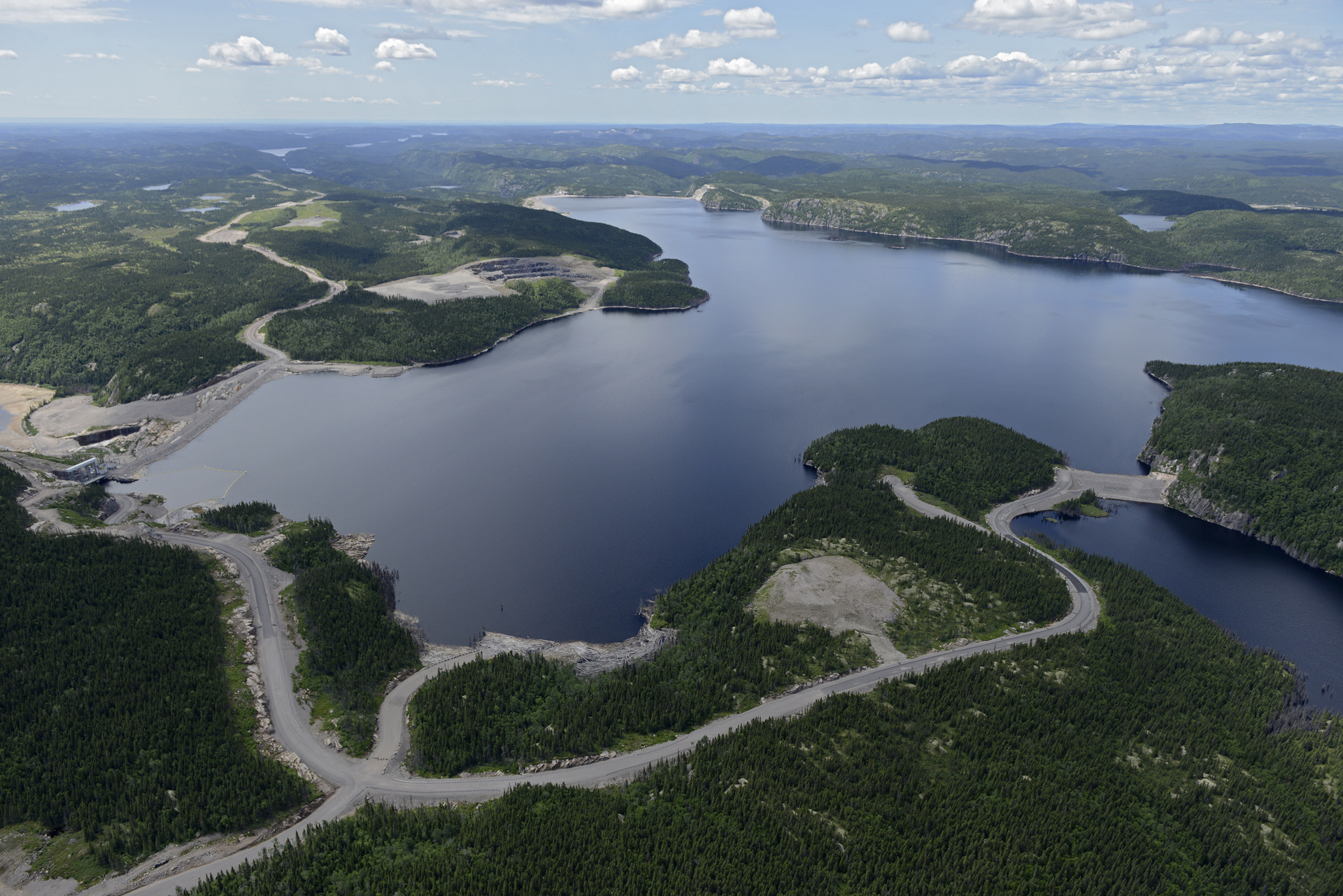
Court halts mine expansion as First Nation challenges B.C.’s decision to greenlight it
Court sides with Xatśūll First Nation, temporarily halting Mount Polley mine waste expansion
Coburn Mountain, standing at 1,133 metres above sea level in the Kennebec River watershed, is beloved by inhabitants of the sparsely populated Maine North Woods. The area’s streams are home to some of the largest populations of brook trout in the state, and the remote forests allow bears, moose, golden eagles and the odd lynx to fly and roam freely.
These are all species that have been spotted by John Nicholas, a New Jersey-born resident of Winthrop, Maine who owns a 45-acre plot of land in the Upper Enchanted Township, about 175 kilometres north of his full-time home. He escapes with his wife Nancy to their cabin on this secluded land during the warm months to go fly-fishing for trout, and he points out that 97 per cent of the brook trout in the United States are found in his state.
When Nicholas first heard about the New England Clean Energy Connect transmission line, known as NECEC, the retired government worker wrote a letter of opposition to the Maine Board of Environmental Protection. In it, he enumerated his reasons for challenging the project, including the fact that the transmission line would become an eyesore in the picturesque mountains and cause irreparable harm to the trout’s habitat.
“They were going to construct this … transmission line over an excess of 2,000 streams, and the streams, this is where the brook trout spawn,” Nicholas says over the phone.
From the get-go, the transmission line faced objections and roadblocks from an unlikely opposition that unites conservationists, oil and gas companies, First Nations and residents on both sides of the American political aisle. In 2018, Hydro-Québec, was contracted by the New England-based energy company Avangrid to transport 1.2 gigawatts of hydroelectricity from Québec to Massachusetts. This was meant to be done via a 233-kilometre-long transmission line, being built by Avangrid, also the parent company of Central Maine Power, and Hydro-Québec, which produces 94 per cent of Québec’s power and is owned by the provincial government. It was designed to help Massachusetts reach ambitious emissions-reduction goals.
But the project has been at a standstill since last fall. A referendum last November gave voice to Mainers who voted 60 per cent in favour of stopping the project. At that point, the Québec company had spent in the neighbourhood of $500 million clearing land and building infrastructure, while Avangrid had committed to conserving 40,000 acres of forest, in accordance with the permit conditions of the Maine Department of Environmental Protection.

Last May, the project’s proponents headed to the Maine Supreme Court to challenge the referendum’s legitimacy, and a verdict is expected to be delivered this month, with plenty hanging in the balance. One way or another, how the court sides on this issue will have considerable impact beyond the future of this project. The decision could set a precedent for investments in large-scale projects in the state altogether. A ruling that deems the referendum legitimate wouldn’t necessarily terminate New England Clean Energy Connect — there have been considerations of burying the transmission line through Vermont, as they plan to do where the line crosses Maine’s Kennebec Gorge, at much greater cost.
However, it would be the end of Hydro-Québec’s work in Maine, according to Serge Abergel, the company’s U.S. chief operating officer who’s seen every bump in the road up close. Sitting in a quiet boardroom in Hydro-Québec’s Montreal headquarters, Abergel’s frustration with the process is under control, but visible. He points out that just 30 per cent of eligible voters showed up to cast a ballot in the referendum.
“If you’re in a place where such complex issues can be summarized into one little question and thrown for referendum to people who don’t necessarily have all the tools required [to fully understand the project], and then you get a little turnout … how can you ever be sure?,” he says, questioning how any company could invest in Maine with confidence.
Lynn St-Laurent, Hydro-Québec’s senior communications advisor, chimes in that time is of the essence too. If Massachusetts is sent back to the drawing board to figure out how to get hydroelectricity into the state, “those are all years and hundreds of millions of dollars that keep coming into the coffers of fossil fuel companies. The more you delay, [the more] that model works for them.”
The transmission line is meant to supply power for approximately one million homes. It’s an energy switch that, according to the Maine Public Utilities Commission, would lead to an emissions reduction equivalent to removing 700,000 cars from the road, since 46 per cent of New England’s energy comes from gas. But though both Massachusetts and Maine have adopted decarbonization plans to reduce emissions by 80 per cent below 1990 levels by 2050, the grip fossil fuel companies have on both states is still firm. And their funding of the project opponents suggests they’ll fight to keep it that way.
Three energy companies with natural gas facilities in Maine — Calpine, NextEra Energy and Vistra Corp — have helped finance the pro-referendum campaign to the tune of nearly US$28 million. Looking at how much is on the line for fossil fuel producers, it’s a drop in the bucket. A 2020 report by Stepwise Data Research found that these companies stood to lose approximately $5.5 million a month if the New England Clean Energy Connect project was completed. The New England Power Generators Association’s president, Dan Dolan, last year expressed concern to Bloomberg that the flood of Hydro-Québec’s cheap power into the region would become a financial problem for the rest of the local energy sector. The Narwhal asked all three energy companies for interviews, but none replied.
For their part, Hydro-Québec and other transmission line proponents have spent nearly US$50 million fighting the referendum. The combined sum from both sides resulted in the most expensive ballot in Maine’s history. With 412,086 votes cast, each one was worth $428.06.
The project’s opposition ran a campaign that often spread misinformation about the transmission line. like that coal would be burned to provide energy in Québec to make up for sales to New England. In fact, this transmission line was designed in the first place to distribute Hydro-Québec’s surplus output.
“What’s frustrating is that you bring science, you bring facts and you’re countered by all sorts of false assertions, allegations. It’s very difficult to push back on them because they’re not based on anything,” Abergel says.
Spending an astronomical sum on its end of the media campaign didn’t prevent the Canadian company from making blunders, though. The opposition’s attempts to frame it as a foreign corporation profiting from Maine, careless of its wilderness, was helped along by its own missteps.

Take a 2020 ad, in which Hydro-Québec used imagery of picturesque Baxter State Park, featuring the state’s highest mountain, Mount Katahdin, without permission. It was a bad move — that mountain, Coburn Mountain and evergreen-dominated forests have become emblems pitting Maine voters against the energy project, and the transmission line would pass about 95 kilometres from the mountain at its nearest point. The park publicly announced it has no affiliation with the project, but that was just one of Hydro-Québec’s many local representation missteps.
“Their ads got so much worse. By the end it was like, ‘if you are against this corridor, you’re really someone who supports Trump.’ The anti-corridor people didn’t even need to do any publicity at that point,” says Ellen Baum, president of the board of Friends of Baxter State Park, who wrote an op-ed in the Portland Herald denouncing the unauthorized image use.
Richard Barringer, the former Maine commissioner of conservation, has supported the transmission line from the get-go. The principal author of the brief submitted to the Supreme Court of Maine, he recalls that Hydro-Québec’s CEO, Sophie Brochu, told him she didn’t only want to build a transmission line, she wanted to build a relationship with the people of Maine. But the COVID-19 pandemic complicated travel for the electricity company’s representatives, making it hard to take that humanized approach.
On the flip side, local opponents including Tom Saviello, the former Republican senator of Maine, had plenty of facetime with locals and were able to grow concerns about environmental preservation. The movement became aligned with well-known environmental organizations, including the state’s chapter of the Sierra Club and the Natural Resources Council of Maine.
Barringer doesn’t see logging and building on the transmission project’s right-of-way as a conservation issue. “It is not what I consider wilderness. It’s a … for the most part, very well managed industrial forest, and it’s been that for close to 150 years,” he says.
Barringer denounces what he considers misunderstanding and misinformation woven throughout the referendum process. “It doesn’t allow for rational discourse, it almost always turns upon emotional appeals to fear, anger and distress, and that’s what the media campaign did,” he says. “It just appealed to the fear of loss of this pristine wilderness, and mostly anger at Central Maine Power Company,” he says.
Before the referendum was in the works, frustration with the power company had long since been brewing, he says, namely because of poorly organized and rolled out new billing and metering systems that made consumer bills skyrocket.
The fact that Central Maine is a subsidiary of Avangrid, which is itself owned by the Spanish company Iberdrola, and Hydro-Québec is Canadian, helped line up a jingoistic one-two punch for the oil and gas companies through the groups their deep pockets support. Though these energy corporations are American, they are based in Texas and Florida, but that didn’t stop the message of keeping energy supply in-state from being spread, in part by a political action committee called Mainers for Local Power.
It also didn’t help the project that many felt Maine was being treated as a drive-through for a foreign company looking to get to a neighbouring state. “I think that they [see] it as just an extension cord from Massachusetts. I think there’s resentment about that,” Nicholas points out.

Long-standing local resentments proved a hot button to push, too. “There’s a very strong anti-Massachusetts feeling in this state because we once belonged to Massachusetts, and getting away from it was painful,” says Barringer, who saw these negative sentiments firsthand when he worked in the legislature.
A video on the National Resources of Maine website calls the project a bad deal for Maine, stating that bringing Canadian power to Massachusetts would be detrimental for locally produced green energy and the sector’s related jobs. However, antipathy towards Massachusetts disregards the fact that New England has a pooled system of energy distribution, meaning the electricity would be used by Maine too.
Back in Canada, Hydro-Québec isn’t beloved across the board, either. Indigenous communities have objected to the company’s proposals and projects on their territories for many decades, including the flooding of (Pessamit) Innu Nation lands to build a dam in the 1960s and ’70s.
Now, five Québec First Nations — Lac Simon, Kitcisakik and Abitiwinni (Anishnabeg Nation), Wemotaci (Atilamekw Nation) and Pessamit (Innu Nation) — officially oppose the transmission line going through their lands. In a press release from July 2021, they state Hydro-Québec and the Government of Québec “persist in ignoring the ancestral and constitutional rights of our First Nations on whose lands more than 36 per cent of the electricity destined for export to the United States is produced, without any of our communities having been consulted, compensated or accommodated.”
The political attaché for Lac Simon, Ghislain Néquado, told The Narwhal the nations’ position remains unchanged.
Barringer adds that his backing of Hydro-Québec isn’t unconditional and relies on the fact that they are using existing structures. “If we were starting up de novo, I could not support what Hydro-Québec did,” he says.
Abergel objects to what he considers untruths about hydroelectric energy that weighed on the referendum process. One of these is about the risk of methane releases from the reservoirs that supply Hydro-Québec’s power.
It’s true that methane is released when hydroelectric dams are created by flooding forests and riverbanks, and the plants present decompose. But a 2021 study, co-written by a Hydro-Québec scientist, on greenhouse gas emissions from hydroelectric reservoirs, argues this is less of an issue in northern regions than tropical locales because there is limited vegetation to decompose. St-Laurent pointed The Narwhal towards the study, published by Professor Annie Levasseur from Montreal’s École de Technologie Supérieur, which also found that cold water contains higher oxygen levels, which result in carbon dioxide being created primarily rather than methane during the breakdown process.

St-Laurent, Hydro-Québec’s senior communications advisor, told The Narwhal that research shows greenhouse gas emissions are most acute for the first five-to-10 years when the affected flora is actively decomposing. Hydro-Québec’s facilities were constructed mostly in the 1970s, so affected vegetation has long since completed its cycle. St-Laurent said while the company can’t entirely rule it out, “we currently have no plans to build a new hydropower plant. There are no such projects in the project cue — and keep in mind these projects take 10-to-15 years to design and build.”
“We can’t exclude any new construction in the future. However, as it stands, we’re focusing our efforts on energy efficiency, increasing the power of some of our existing facilities and developing new wind projects.”
Barringer acknowledges that other sources of clean energy exist, but said the amount of hydroelectricity Hydro-Québec can provide is needed to support more intermittent renewables. “You can have a mixture of things — greater battery capacity, more conservation, more solar, more wind — but you need a certain amount of baseload capacity,” he says.
Abergel said that’s why the New England Clean Energy Connect transmission line is crucial for meeting decarbonization goalposts in the not-so-distant future. “If it takes 10 years to get a project like this permitted and built … we have less than 10 years to act right now. And we need many more like this,” he says.
The strife over New England Clean Energy Connect is a clear example of how the fight against climate change has fractured and become more complex. The line no longer runs tidily between believers and deniers, battling to find a middle ground while there’s still enough left to conserve.
Updated on July 18, 2022, at 9:22 a.m. ET: This story has been updated to correct a line stating that cold water contains lower levels of oxygen. In fact, cold water contains higher levels of dissolved oxygen, which helps biomass in hydroelectric reservoirs decompose into carbon dioxide rather than methane.
Get the inside scoop on The Narwhal’s environment and climate reporting by signing up for our free newsletter. On a warm September evening nearly 15...
Continue reading
Court sides with Xatśūll First Nation, temporarily halting Mount Polley mine waste expansion

Break out the champagne: Emma’s storied life and leadership in journalism has earned her the...

How can we limit damage from disasters like the 2024 Toronto floods? In this explainer...
